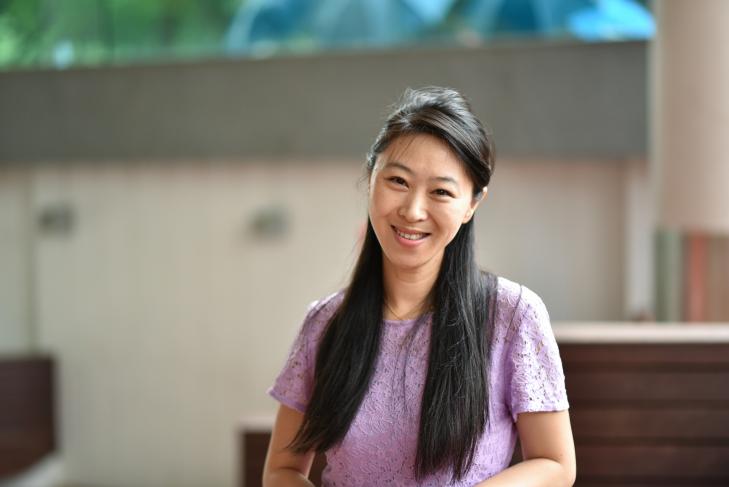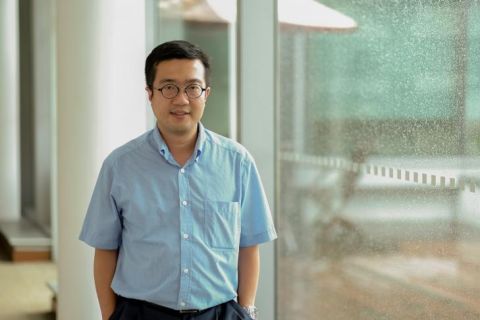
Is it better to be an early adopter or wait till the technology matures? Associate Professor Ma Dan helps companies make data-driven decisions.

Photo Credit: Cyril Ng
By Rebecca Tan
SMU Office of Research – While IT has opened up new modes of business such as e-commerce, it has also driven other industries into decline. Take the music industry for example, which, at its peak in 2000 sold over 2.45 billion CDs. By 2014, CD sales had declined to just 140.8 million, as MP3s became widely popular and music streaming services grew in sophistication.
However, adapting to technology-driven changes is not simply a case of fastest fingers first. There must be a balance between gaining an early competitive edge and jumping on the bandwagon only when the technology has stabilised and matured, cautions Associate Professor Ma Dan from the Singapore Management University (SMU) School of Information Systems (SIS).
“In the early 2000s, software companies in the United States were keen to implement a new business model called Application Service Provider (ASP), whereby users access software hosted by the ASP rather than buy products to run on their own systems. However, it failed because the technology had not yet matured,” she explains.
By the time Professor Ma graduated from University of Rochester with a PhD degree in Information Systems in 2006, advancements in technology had revived the ASP business model, but only to fail again. This motivated her to question its failure despite the availability of technology readiness.
From products to services
Back then, ASP seemed like a good idea in theory. By providing Software as a Service (SaaS) rather than a product, companies gave consumers cheaper access via monthly subscriptions or pay-per-use schemes rather than one-off purchases. More importantly, services such as maintenance, data backup and upgrades were all provided with the software as a package. What was lacking, says Professor Ma, was flexibility.
“Companies did not realise that the software they sold as a product should be different from the version they sold as a service. When sold as a product, the software is typically customised to meet each customer’s needs. In contrast, when a software is put in a server and delivered as a service in the marketplace, it has to be a version that can serve everyone’s needs.”
Once companies decide on what type of software can be provided as a service, they then have to deal with the question of pricing. Her work with Amazon Web Services (AWS) has helped Professor Ma to generate different kinds of pricing and competitive strategies for software providers.
“In moving from products to services, Amazon now uses what is called on-demand cloud computing service which charges customers based on their usage of its IT resources. It also offers another more innovative pricing strategy by allowing users to bid for usage on a per minute basis. Amazon wants to know whether this new strategy is optimal, and if so, under what specific circumstances,” Professor Ma shares.
The trouble with bid pricing is that the number of people competing to use the service makes it risky for users who might have their existing projects interrupted if higher bids come in. To mitigate this risk, Amazon posts a 90-day record of previous bids, in an attempt to allow customers to predict prices and decide whether they want to pay the full price for guaranteed services or bid for available slots.
“One of my research studies modelled this whole process using real cases to investigate whether Amazon should use this pricing scheme or not. Proposing a damaged services perspective, it showed that Amazon should use service interruptions to differentiate between its two services to make its pricing strategy work,” Professor Ma says.
Support for cloud computing
Professor Ma notes that many small and medium-sized enterprises in Singapore are facing similar technology-driven transitions as the multi-national companies she has studied (such as Amazon), and looks forward to applying her expertise to the local context.
“Even Singtel is moving into the SaaS market, having established a cloud service platform in 2009. In fact, I produced a paper in 2010 that addressed what customers really need and what kind of services a provider should deliver,” she says.
“My study was driven by several impetuses. In Singapore, the development of cloud computing was supported at all levels, from policy to the merchants. This, coupled with the industry collaborations that SIS had, gave me a unique environment to explore this fascinating field.”
Tech-driven transitions in financial markets
Beyond the software market, Professor Ma also applies her research to financial markets, particularly in studying how IT has penetrated mobile payments and technology investment decision making.
“When it comes to mobile payments, it does not solely depend on banks’ decisions to allow such payments to replace existing credit card payments. It also involves decisions from IT infrastructure providers like Google, as well as cooperation from mobile manufacturers and individual merchants to install special machines to facilitate these transactions,” she notes.
“The entire ecosystem needs to come to a consensus on whether to adopt the new technology, and understand what are the costs and benefits of doing so,” she adds.
In the realm of high frequency trading, where tiny differences on the scale of microseconds could bring traders either huge profits or losses, Professor Ma studies how innovation can be used and what guides whether firms should create new technology or take a wait-and-see approach.
“My work ultimately helps firms forecast what the market structure will be and what are the trends caused by IT innovation. I hope that the evidence I provide can help them decide on the role they can play in these technology-driven transitions,” she says.
See More News
Want to see more of SMU Research?
Sign up for Research@SMU e-newslettter to know more about our research and research-related events!
If you would like to remove yourself from all our mailing list, please visit https://eservices.smu.edu.sg/internet/DNC/Default.aspx

